Cowboy Boots and Cow Pies, Clay and a Soup Spoon:
The dazzling artistry of Rick Dillingham
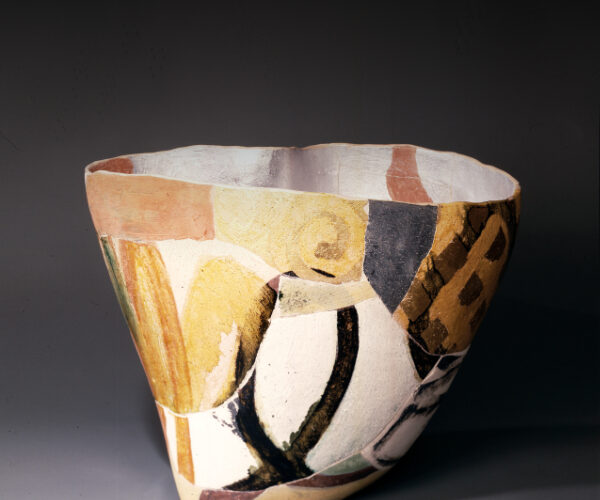 Rick Dillingham (American, 1952–1994),
Kidney-shaped vessel, 1988. Reassembled
kiln-fired ceramic with slips, glazes and
metallic leaf. 15 × 20 ¼ × 14 ½ inches.
Bequest of the artist, The University of
New Mexico Art Museum, Albuquerque.
Image courtesy Herb Lotz. 94.27.11.
Rick Dillingham (American, 1952–1994),
Kidney-shaped vessel, 1988. Reassembled
kiln-fired ceramic with slips, glazes and
metallic leaf. 15 × 20 ¼ × 14 ½ inches.
Bequest of the artist, The University of
New Mexico Art Museum, Albuquerque.
Image courtesy Herb Lotz. 94.27.11.
By Maurice M. Dixon, Jr.
In the spring of 1974, while firing some newly crafted clay vessels, an incident radically changed James Richard (“Rick”) Dillingham II’s artistic trajectory.
Retrieving the fired vessels from his friend and noted Albuquerque ceramicist Billie Walters’s backyard kiln, the tall, lanky, bearded Dillingham was dismayed to discover that one of his prized pieces—a marginally burnished globe whose upper body was ornamented with regularly spaced rows of perforations—had cracked in the firing or while cooling. In a pique of unbridled colère, he gave the piece a swift kick that sent it tumbling. Envisioning possibilities, Walters suggested he reassemble the shattered sherds. Following her suggestion, he chose a gooey mastic (to which he added black pigment) that oozed from the cracks of the reassembled vessel.
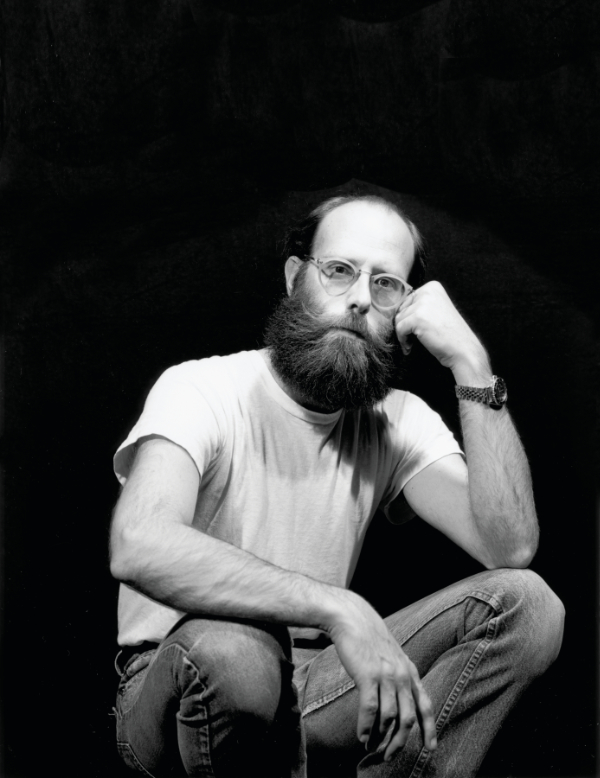
The result was a surprising success. Of a serendipitous moment, an entire genre of “fractured” vessels (Dillingham’s preferred terminology) emerged that would bring the impetuous potter wealth and international recognition.
During Dillingham’s brief but highly productive lifetime and in the decades following his death, various aspects of his persona confused, irritated, and flummoxed those who have at times conveyed sensational and misleading presumptions of his brilliant and substantial accomplishments as a scholar, anthropologist, and artist.
Rick Dillingham: To Make, Unmake, and Make Again, on view at the New Mexico Museum of Art in Santa Fe through June 16, 2024, is the first retrospective exhibit of Dillingham’s artistry in twenty-seven years. The last was a limited posthumous tribute in 1996, also at the Museum of Art (then the Museum of Fine Art), following Dillingham’s untimely death at 41, two years prior, due to complications from AIDS. Selected pieces from Dillingham’s bequest to the museum—works that were never exhibited or offered for sale to the public but were kept for study, reference, or sentimental attachment—comprise a significant portion of the new exhibition.
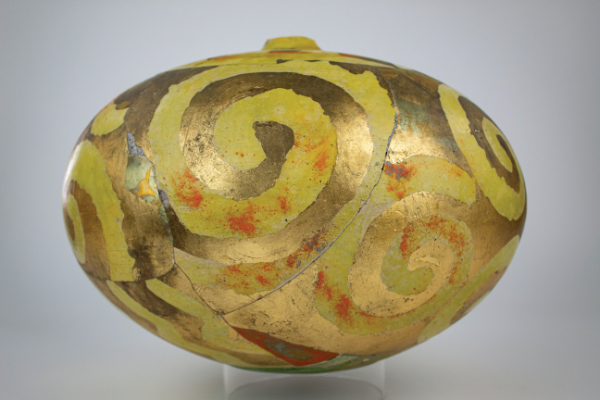
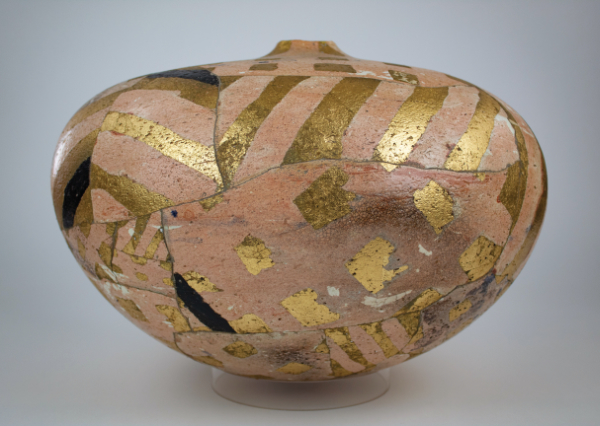
The pieces Dillingham crafted during his first months as an undergraduate at The University of New Mexico (1971–1974), although skillfully wrought in stoneware and porcelain clay are, with few exceptions, unremarkable, reflecting the 1970s era of pottery-making. Influenced by renowned British potter Bernard Leach (1887–1979), an advocate of rustic functionalism, and Shoji Hamada (1894–1978), internationally revered Japanese master of the art of raku, Dillingham’s well-crafted vessels included the requisite “weed pots” of the era.
An abrupt change occurred when Dillingham began frequenting workshops hosted by the California guru of organic, back-to-basics pottery making, Hal Riegger (1913–2005). Riegger’s dynamic personality and forceful determination, in tandem with Dillingham’s increasing awareness of the traditions of Southwestern Pueblo pottery—encompassing not only that of contemporary potters but also the earliest extant examples of Ancestral Pueblo cultures—dramatically altered and informed his understanding of, and relationship to, clay and the many possibilities the medium possessed.
Abandoning the potter’s wheel and eschewing commercially prepared clay, slips, and complex high-fire glazes, Dillingham embarked on a journey of discovery, seeking local sources of clay, digging it from road-cut embankments, then methodically processing, tempering, and making repeated test firings to determine its strength and resilience. His forays into the wilds of the Southwest were often searches for fuel for firing his wares. Emphatically avowing that cow pies collected in the remote expanses of Arizona were superior to those scattered on the grazing lands of New Mexico, he was perpetually on the lookout for cattle as he traversed the highways of northern Arizona while journeying to visit pottery-making friends in their Hopi villages. His dusty Volkswagen van was legendary for its earthy aroma of dried manure.
After graduating from The University of New Mexico with a BFA, Dillingham returned to California, where he enrolled in the master’s program in ceramics at Claremont Graduate University. There, he had the good fortune to study with acclaimed American ceramicists Paul Soldner and Peter Volkus, known for their vigorous approach to clay and expressionist attitudes regarding the supremacy of form, with little or no regard for function. Under their tutelage, as well as other faculty, Dillingham’s work aquired a sophistication of form and an original character that is not easily defined.
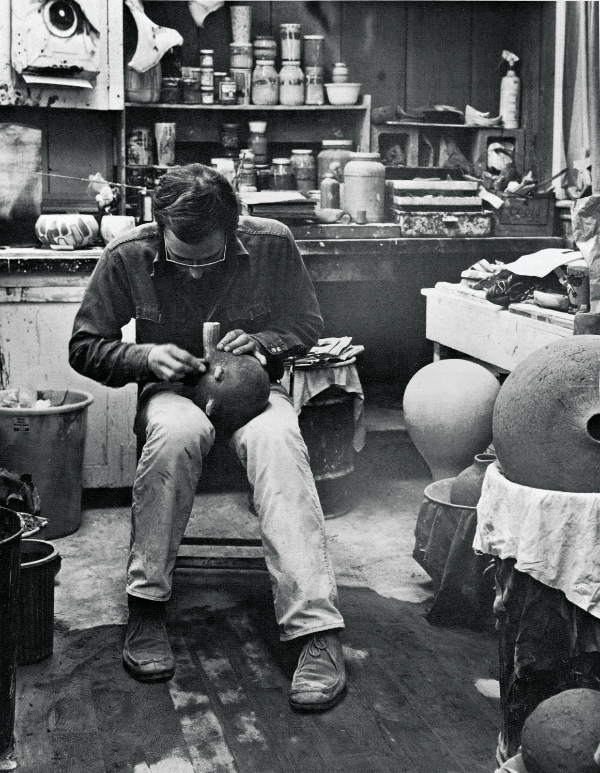
After earning his MFA in 1976, Dillingham headed to Santa Fe. There, he soon established his permanent residence and studio on historic Agua Fria Street, where he continued the exploration of the themes and forms he initiated while at Claremont Graduate University. In 1977, his worldview was considerably enhanced when he received a National Endowment for the Arts Craftsmen’s Award (he was awarded a second NEA Craftsman’s Fellowship in 1982), a portion of which financed an extended period of travel and study in Europe.
There, Dillingham’s artistic horizons were broadened by viewing rare treasures firsthand while also slipping away to bask in the sensual pleasures of Greek islands and their sun-washed beaches. His exploration of European cities with their architectural treasures and art-filled museums was the first of many journeys he made to the continent. He returned to Spain time and again, having become enamored with the landscape, architecture, arts and culture, and inhabitants. The rustic artistry of rural Spain enchanted him to such a degree that he began importing furniture, artifacts, and ceramics to augment the inventory of the high-end East De Vargas Street gallery, which specialized in historic Hispanic and Indigenous art, that he co-owned with antiquarian Joe Carr and charismatic, indomitable, Harvey Mudd III.
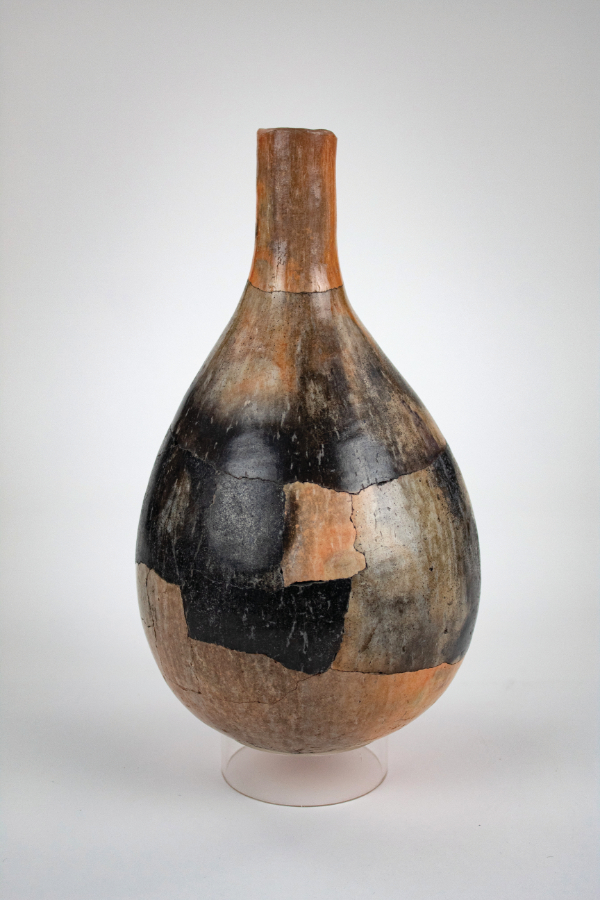
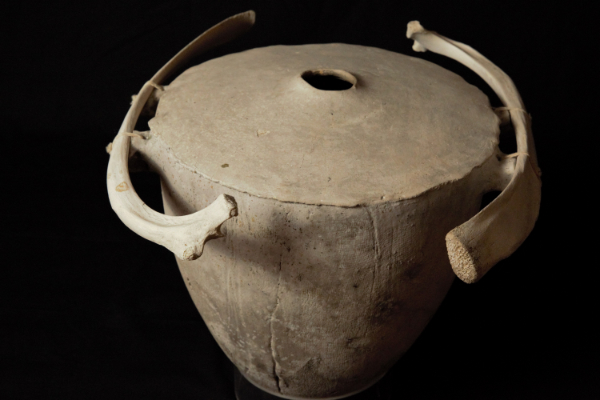
Dillingham’s early years on Agua Fria Street were dedicated to the diligent crafting of slab-and-coil-built vessels which he raku- and pit-fired in the kilns of other potters, and in his backyard overlooking the Santa Fe River. Billie Walters—who first made Dillingham’s acquaintance in ceramic classes at The University of New Mexico—in the foreword to the catalog of his posthumous UNM Art Gallery retrospective, Rick Dillingham: 1952–1994, described his meticulous firing process:
“It was always fascinating to watch Rick carefully and patiently build a beehive shape of layers of dry cow dung around his large, round burnished pots. The dung would be ignited, burn and cool to a whitish ash. When the pots had cooled, Rick inspected each one by turning it in his hands and tapping it with his fingers to listen for cracks or flaws, and then would sit back to study the beautiful colors that had developed.”
Dillingham was on fire. It was a condition with which he was intimately familiar; as a student at The University of New Mexico, he had fired some newly crafted vessels in a fifty-gallon garbage can in the back alley of the apartment complex where he was living, eliciting great excitement with the arrival of a large contingent of the Albuquerque Fire Department. The energy, visible and inherent in each piece he fashioned, was mirrored by his vortex of activity. He crafted an immense volume of work for gallery and museum exhibitions throughout the United States, entered competitions, guest-curated exhibitions, and delivered lectures on the history of Ancestral, historic, and contemporary Pueblo pottery.
Additionally, Dillingham maintained a thriving business representing contemporary Pueblo potters, placing their work with dealers and galleries nationwide. His Mudd-Carr Gallery affiliation was coupled with a whirlwind social schedule regularly fêting art, music, and fashion celebrities. Weeknights would find him gracefully two-stepping to George Strait’s All My Ex‘s Live in Texas at Mr. R’s Rodeo Nights, the popular country-and-western dance hall on lower Cerrillos Road. Weekends would find Dillingham late-night disco-dancing in New York or Los Angeles, or in downtown Santa Fe at the clamorous, smoky Senate Lounge.
Dillingham’s most iconic works are a series of Gas Cans crafted in numerous iterations throughout his career. Their inspiration may have been the ubiquitous sturdy metal fuel containers strapped onto the rear of four-wheel-drive vehicles of the 1940s and ‘50s. The precursor to the form (beginning as an ungainly, lumpy, bulbous vessel with a pair of opposing spouts) was possibly a series of Bag Pots—narrow, elongated, ductile vessels reminiscent of the sturdy canvas water pouches that once could be seen attached to the grills of vehicles traversing the arid Southwest—that appeared early in Dillingham’s oeuvre. The quasi-rectilinear forms of the subsequent vessels were bathed in refulgent hues of incandescent red, flaming orange, ochre yellows (achieved with a wide assortment of oxide-infused clay-based slips and washes) or, conversely, in midnight black. The University of New Mexico Art Museum Director Peter Walch observed that Dillingham’s iconic gas cans were ‘‘wonderful mock-utilitarian creatures of alternately mirthful and sinister appearance.”
The bold vessels sported fins, tails, rooster-like combs, and on occasion, odd and questionable tree trunk-like appendages. Each piece represented an aspect of existential freedom, the freedom of exploration exemplified by Dillingham’s love of driving at break-neck speed across the expanses of the West on his motorcycle or in his sleek, grey-green Porsche. Jarring, daring, and confrontational, the Gas Cans were the expression of an artist who did not readily communicate in words his innermost thoughts. Not that Dillingham was inhibited. Quite the contrary. Many were at the receiving end of his razor-sharp wit, just as there were those who were beguiled by his easygoing, graceful manners and thoughtful generosity.
Penning the text for the catalog of a retrospective exhibit (installed at St. John’s College in Santa Fe in 1982), faculty member of the California College of Art and Crafts, Charles Fiske, recognized in his former student (Dillingham attended CCAC from 1970 to ’71 and there formed a close, lifelong friendship with Fiske’s partner, acclaimed ceramicist Viola Frey) a great and unusual talent, capturing the essence of Dillingham’s artistry in two lines:
To make, to unmake, to make again.
To juggle tradition, disrupt utility.
In tandem with his periodic episodes crafting Gas Cans, Dillingham simultaneously explored the seemingly endless possibilities of fractured vessels, which he first discovered with Walters’s encouragement following the firing episode gone awry. Aware of the significance of his first reassembled vessel, Dillingham retained the piece in his personal collection. It remains today in the collection of The University of New Mexico Art Museum.
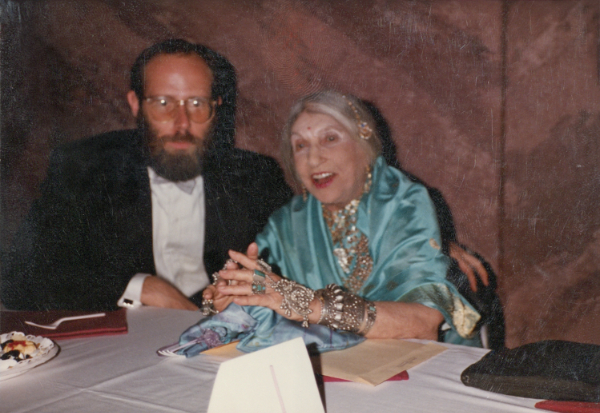
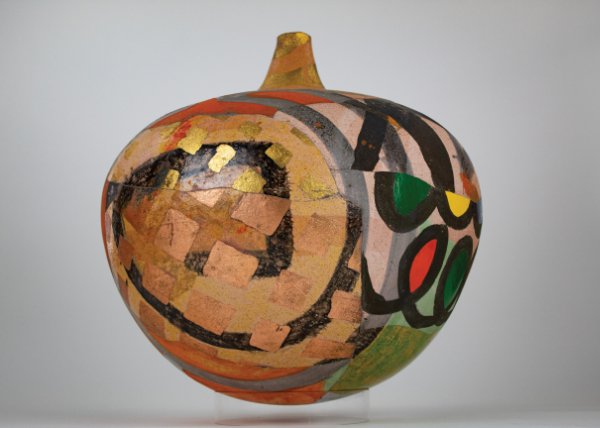
Dillingham’s fractured vessels invariably elicit the most interest, leading to confusion, puzzlement, intrigue, and in some instances, hostility on the part of collectors, gallerists, admirers, and journalists. The works that initially emerged from his studio were similarly formed bulbous spheres with tapering necks or spouts, highly burnished and with little or no decorative ornamentation. By randomly placing a vessel’s fractured segments throughout the firing pit, individual sherds would acquire tonal characteristics unique to the atmospheric conditions of the firing. When the variously hued sherds were reassembled, an entirely different vessel emerged, its various component parts ranging from dark umber to light sienna orange, subtly suffused with freeform “fire clouds.”
Dillingham’s vessels incrementally increased in scale and variety of form. When intentionally fractured (the bisque-fired pieces were not smashed but were tapped with a flattened, wooden baton, cracking like an egg), the carefully separated pieces were then randomly painted with mineral-based washes, oxides, slips, and glazes. Selected pieces were repeatedly fired three or more times until a desired effect was achieved, the final appearance not known until after the firing and reassembly of the individual work. With the acquisition of a commercial kiln, the ability to “paint” with vivid lead- and chromium-based low-fire slips and glazes extended the range of color and textural possibilities.
Having stated to a reporter that he was not a “potter’s potter” but “a painter-in-clay,” he produced works dominated by complex patterns achieved with resplendent color. These works, although initially appearing (to the untrained eye) as an incomprehensible mishmash, were carefully considered and methodically executed. Dillingham’s design regimen was basic, consisting of a checkerboard-like grid, parallel bars, chevrons, and spirals.
In an undated artist’s statement, he wrote: “I keep all the processes as simple as possible to reach the results that I do. And keeping the forms simple as well—spheres, triangles, cones, rectangles—lets me get away with visual murder on the surface.” His schematic choices, like his meticulous and detailed record-keeping, did not suddenly appear, but had been gestating since his earliest student days at the California College of Arts and Crafts. The few extant examples of wheel-thrown stoneware production from the early 1970s are decorated with parallel bars of muted hues or anchored with rigid grid patterns.
Like all perceptive artists, Dillingham knew what to select and translate into his personal decorative lexicon. He also knew what to leave behind. In interviews with incurious or uninformed journalists (some described his work as having been wheel-thrown), Dillingham defended the origin and aesthetics of his work by explaining that if there was a visible influence in his work, it was that of the pottery of Africa, and to a lesser extent Asia and Egypt. To those who defined his work in terms of Indigenous American influence, Dillingham’s responses were adamant. In one example, he replied to a 1975 Buffalo, New York, newspaper article comparing his work to that of Pueblo artisans: “I can’t be an Indian. I’m not trying to be.” The viewer had only to look with a more discerning eye.
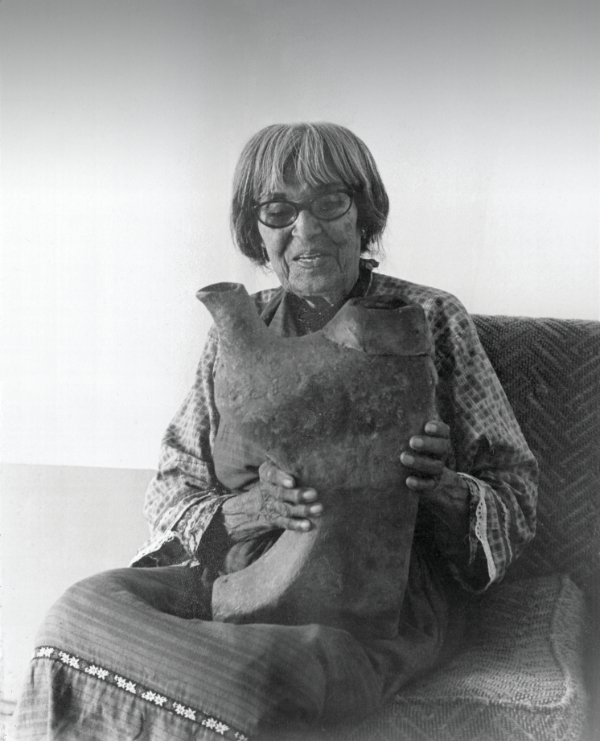
Participating in Riegger’s workshops, he would certainly have been made aware of the centuries-old pottery traditions of African cultures—not only the sculptural forms of daily utilitarian vessels, but their decorative aspects as well. The regimented decorative perforations and protrusions characteristic of his student work may have been derived from this knowledge. His interest in monumental form was most readily realized in his open-mouth vessels of the late 1970s and, later, in the early 1990s. Indeed, keen knowledge of African utility vessels may have informed the series of “deformed” flat-bottom bowls and columnar vases, elongated, provocative pyramids, and enigmatic cones whose function is perplexing. They pose the question: What am I? What is my purpose?
Encountering one of Dillingham’s globular vessels enveloped in a kaleidoscope of glittering spirals, is reminiscent of the bold color and patterning in paintings by Austrian artist Gustav Klimt (1862–1913). Egyptian ritual and funerary objects were of interest to Dillingham, as was his appreciation of luster glazes harking to the centuries-old Arabic presence in northern Africa and Spain. His fascination with luster glazes resulted in hours of research and experimentation with glazes harboring hazardous ingredients (he was known to open the door of the kiln while firing and casually toss assorted powdered oxides and glazing ingredients onto the molten forms of his vessels), which led to a serious bout of lead poisoning.
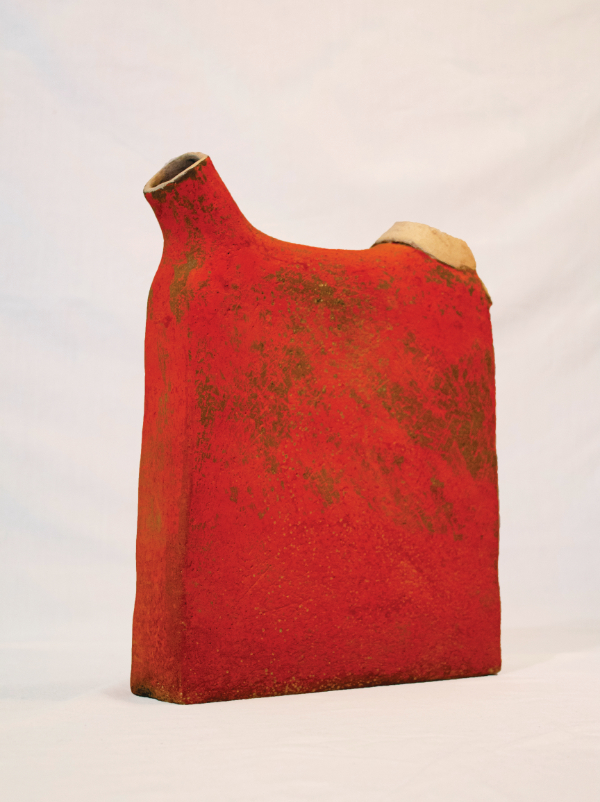
The interest in the properties of luster glazes possibly began when, as a teenager (and an already accomplished studio ceramicist), Dillingham made a visit to the home and studio of the legendary doyenne of odd but intrinsically fascinating luster-glazed ceramics: Beatrice Wood (1893–1998). Having taken an immediate liking to the intense and inquisitive young man, Wood assumed the role of teacher, mentor, surrogate parent, and lifelong friend. Dillingham was a frequent guest at Wood’s Ojai, California home, where the pair spent endless hours discussing the properties of clay and glazing techniques.
When in the early 1980s Wood completed her memoirs chronicling her vibrant bohemian life and could not find a publisher, Dillingham stepped in with encouragement and financing. Dillingham Press was formed. I Shock Myself: The Autobiography of Beatrice Wood was published in 1985, selling thousands of copies. Wood’s gratitude to Dillingham was immense and warmly expressed in the letters she sent, each containing a check as repayment for his generosity.
Many of the letters Wood wrote to Dillingham emphasized her recognition of his work as “of the earth,” a spiritual response to the majestic landscape and limitless horizon of the Southwest. Regarding his clay works as receptacles for space, he routinely crafted works of ethereal mystery. Coil- and slab-built and customarily pit-fired, the pieces are reminiscent of sun-bleached bones, or when burnished (Dillingham’s preferred burnishing tool was the back side of an old soup spoon), river-polished stones. Wood’s astute observations may have been made in reference to a series of gray or bone-white vessels to which he attached the rib bones of sheep or the feathers of road-kill birds he encountered during his periodic cow pie hunting expeditions.
Scrutiny of this series of vessels reveals an informed knowledge of Archaic Greek fired-clay funerary urns or objects of similar form; the feathers, sticks, twigs, and bones serve as distractions for those with preconceived notions and romanticized visions—promulgated by movies, comic books, and romanticized visions of what constitutes traditional Southwestern ceramics. Dillingham’s close relationship with Pueblo potters was based on trust and his sincere interest in the properties of clay, its crafting, and the techniques of firing. His respect for the potters’ artistry was paramount. Secure in his own innate creativity, he had no need or desire to imitate or appropriate the work of others.
Dillingham’s desire to collaborate with other potters and artisans—including Georgia O’Keeffe—was expressed early in his career when, following one of Riegger’s rigorous expedition workshops, he was introduced to collaborative pottery-making traditions with Mojave potters of the Colorado River Basin. Having established friendships with many Pueblo potters, he posited the idea with varying success. Dextra Quotskuyva (Hopi-Tewa), who considered Dillingham to be a dear friend, was particularly fascinated by his working methods, fondly reflecting on Dillingham making his “little spouts.” His collaboration with San Ildefonso Pueblo potter Maria Poveka Martinez was perhaps that of student and instructor given the two artists’ age and fame difference, yet he prevailed in at least one collaborative effort with the legendary potter. Photographed by Dillingham, Martinez, with a slightly skeptical expression, was shown holding a partially completed green-ware Gas Can in her lap.
His friendship with Santa Clara Pueblo potter Margaret Tafoya was sincere and respectful. In preparation for an exhibit of her work, The Red and The Black, at the Wheelwright Museum of the American Indian in Santa Fe in the summer of 1983, Tafoya entrusted Dillingham to photograph her as she crafted one of her trademark wedding jars. The photographs documented Tafoya’s creative process, from the preparation of the clay to the final carving, burnishing, and firing of the piece. The image chosen as the frontispiece for the catalog portrayed the potter proudly displaying the finished vessel. Dillingham’s friendship with potter Dora Guachupin Tse-Pe’ (Zia/Jemez/San Ildefonso) was such that he crafted for her an entire set of wheel-thrown stoneware dinner pieces that included stemmed goblets and dessert plates with her trademark stylized bear emblazoned in the center and her name skillfully inscribed on the rim of each plate.
Underlying the strenuous daily activities of business and studio were Dillingham’s intellectual pursuits researching the origins of Southwestern Pueblo pottery, spending hours in the collections of the Museum of New Mexico’s Laboratory of Anthropology and the School of American Research (now the School for Advanced Research, or SAR), as well as visiting museums and collections in Arizona, California, Washington, D.C., and elsewhere. He periodically contributed articles to scholarly publications (such as El Palacio, Summer/Fall 1987), and he was often invited to lecture at venues throughout the United States. At these events, he would engage the audience in rapt attention as he discussed in his distinctive pedagogic timbre the myriad aspects of Pueblo pottery, flatly declaring at one Seattle ceramics conclave in 1980, “Pots are just dirt!” His craftsman’s knowledge of clay, its preparation and execution, the specific slips and organic pigments used by Pueblo potters, coupled with his keen knowledge of the properties of pit firing, was riveting. Recorded lectures housed in the SAR archives are rare documents of his iconoclastic yet insightful knowledge of the history and cultural relevance of Pueblo pottery throughout the Southwest.
The ease with which he conducted his lectures may be attributed to his undergraduate studies at The University of New Mexico. Having acquired curatorial training at the Maxwell Museum of Anthropology along with a regimen of anthropology classes, Dillingham was asked to participate in organizing an exhibit comprising the works of seven contemporary Pueblo pottery-making families whose work was of significant and long-standing merit. An un-posed photograph taken at the exhibit’s opening in May 1974 evinced a youthful but pensive Dillingham, standing, surrounded by the matriarchs of Pueblo pottery dressed in their finest traditional ceremonial attire. The occasion was momentous, but only later was its significance fully appreciated. Seven Families in Pueblo Pottery, the exhibit catalog compiled and edited under Dillingham’s tutelage, proved so influential that for more than three decades, collectors and museum curators consulted it religiously prior to making purchases of contemporary Pueblo pottery.
Dillingham was encouraged to describe and codify the centuries-old pottery-making traditions of the adjacent Pueblo villages of Laguna and Acoma in west-central New Mexico. Sponsored by SAR, Dillingham worked diligently on the project, struggling mightily with the appropriate content and tone of the manuscript. After nearly a decade—despite institutional and editorial roadblocks—and with the assistance of author Melinda Elliott, his efforts were realized in 1992 with the publication of Acoma and Laguna Pottery.
Receiving accolades from scholars and collectors alike, Dillingham revisited the success of Seven Families in Pueblo Pottery. With renewed vigor, he widened his study to include seven additional pottery-making families. Aware of the increasingly perilous status of his health, he was intent on seeing the project to fruition. Much of his new research was conducted via phone and written communication, although he also made personal visits to his Pueblo friends. The manuscript of his expansive effort, Fourteen Families of Pueblo Pottery, was completed in 1993 but did not go to press until later in the year. It was posthumously published in the spring of 1994.
Like his patrons, Dillingham was a collector of refined aesthetic discernment, having begun his collection as a twelve-year-old on vacation with his parents in Tucson, Arizona, when he purchased a pair of small black-and-white painted pots for a few dollars. (These, along with a significant collection of works by contemporary Pueblo potters, were gifted by Dillingham to the Museum of Indian Arts & Culture.) Among the works that held pride of place in his home were those of ceramicists Peter Voulkos, Lucie Rie (El Palacio, Fall 2001), Betty Woodman, Ken Price, Viola Frey, and Beatrice Wood. Magnificent pieces by Pueblo potters Maria Poveka and Julian Martinez, Popovi and Tony Da, Margaret Tafoya, Lucy Lewis, Lolita Concho, Rachael Nampeyo, and Santana Melchor, along with historic Pueblo pottery, were prominently displayed. His extensive collections of vintage and contemporary Mojave “dolls” were artfully displayed on the shelves of his library, beneath which were arranged his vast stable of stylish cowboy boots, many of which he wore with joyous abandon on the dance floor or, on feast days on the hard-packed earth of Pueblo plazas.
Personal adversity, coupled with his deteriorating health status, inevitably contributed to the angst and anger visible in the striking pieces that emerged from Dillingham’s studio in the late 1980s and early 1990s. Unsettling in their brutal appearance and realized in distorted proportions and jarring juxtapositions of pattern, hue, and tone, they were expressions of unleashed emotion in response to the political apathy and inattention in the United States toward the ever-worsening AIDS crisis.
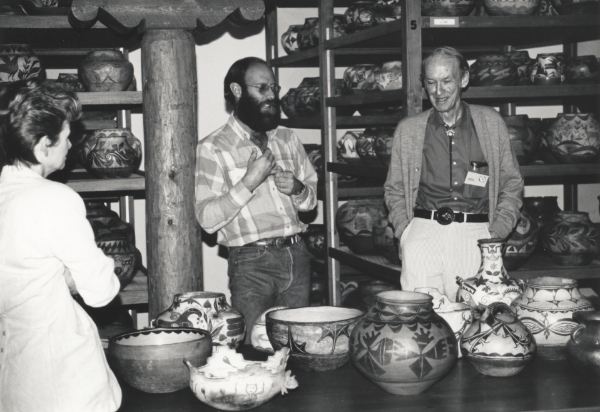
Tackling the issue head-on, he crafted a series of works for an exhibition, Random Beauty: The AIDS Series, scheduled for the spring of 1993 at the Linda Durham Gallery in Santa Fe. The series, consisting of four monumental disparate-shaped forms, was confrontational, unsettling, and profoundly original. Nothing of their kind had been seen before in Dillingham’s vast repertoire of clay vessels. The exterior of each piece was bathed in muted earthen hues suffused within and beneath dense matte-black oxide, each of their suffocating surfaces relieved only by a solitary cut-away aperture in the shape of a heart, square, and in two of the works, a triangle that revealed interiors swathed in silver metallic foil or coated with a vivid Pepto Bismol-pink matte slip.
Never before had Dillingham’s artistry been inspired by metaphor. When asked by journalists about the meaning and purpose of the work, Dillingham’s reply was one of quiet acquiescence and forthright acknowledgment of the plague that was ravaging the gay community, but also of hope for a brighter future. In an interview with Guy Cross, reporter for the April 1993 issue of THE Magazine, he mused: “I find it empowering to take away some of the disease and put it into an object.”
Among other vessels crafted that spring was an extraordinary work: a bold visual statement resplendent with plangent color, expressive gestures, and scintillating metallic collage. The piece was a tour de force that reflected his past accomplishments as a master-in-clay and issued an expressionistic vision of future achievement. Each reassembled sherd was imbued with a volatile energy conversing in tandem with decorative themes yet to be fully explored. Dated March 1993, the vessel was to be his last polychrome sphere brought to fruition: a final self-portrait of an artistic continuum contained in a receptacle for space. Fittingly, the piece was chosen to illustrate the cover of the catalog for the Santa Fe Rotary Club’s Distinguished Artist Award banquet, held to honor Dillingham on October 27, 1993.
Returning at the beginning of the New Year from Las Vegas, Nevada, where he attended an eagerly anticipated Barbara Streisand concert, and although exhausted from the holiday adventure, Dillingham was keenly anticipating the publication of Fourteen Families of Pueblo Pottery and the completion of plans for a traveling University of New Mexico Art Gallery retrospective exhibit scheduled to open in the spring of 1994.
Fate was to prove otherwise. In an expansive front-page article dated January 23, 1994, the Santa Fe New Mexican announced the death of the celebrated ceramicist.
Of the many posthumous tributes that were published in the following months, the foreword to The University of New Mexico Art Museum’s retrospective catalog—contributed by Dillingham’s beloved friend Billie Walters—was a succinct assessment of Dillingham’s artistry: “Without a doubt, Rick loved his pots—their forms, surfaces, and colors. It seems to me that throughout his career, he never lost his sense of awe and wonder at seeing the transformation of coiled clay into beautiful and mystical expressions.”
—
Maurice M. Dixon Jr. (BFA, MFA) is a painter, tinsmith, art historian, and author of The Artistic Oddyssey of Higinio V. Gonzales: A Poet and Timsmith in Territorial New Mexico and coauthor with Lane Coulter of New Mexico Tinwork, 1840–1940, and a past contributor to El Palacio. He was a consultant for Rick Dillingham: To Make, Unmake, and Make Again, and was a long-time acquaintance of the ceramicist.
